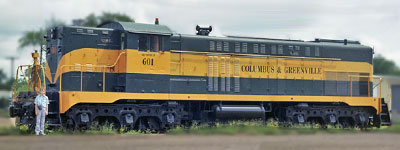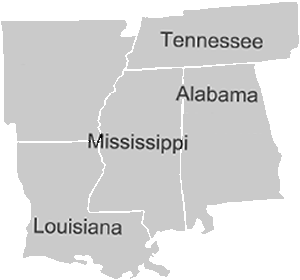


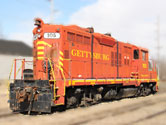





Mobile & Gulf Railroad

Near the shores of the Sipsey River stretch 11 of Alabama's 5,500 railroad miles. The state claims one train mile for every nine square miles, while Mobile & Gulf's main aim is to get from Brownsville to Buhl. It gave up long ago trying to make it to Mobile in the southern part of the state. Still, it had tried. Mobile & Gulf fell short of Mobile by only 150 miles. The Gulf of Mexico may have been another 40 or so miles beyond. The little road then, is content with its brief span, following a custom of steam energy in a state imbued with tradition.
John Krause, Rails Through Dixie, 1965
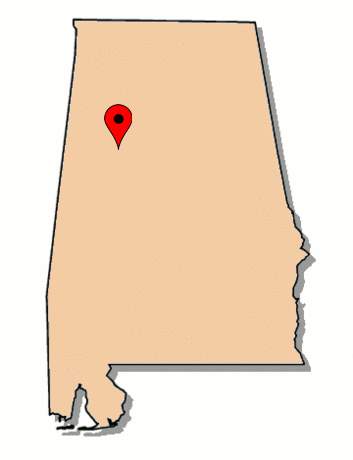 The 10-mile long Mobile & Gulf Railroad was a homespun Alabama shortline, despite the fact that it never came close to either of its namesake locations.
Located in northwest Alabama, the line was incorporated in 1925 to acquire and operate a line of railroad in Fayette and Tuscaloosa counties, and to construct and extension of this railroad. It was controlled by the W. P. Brown & Sons Lumber Company, of Louisville, Kentucky. The main purpose of the line was to serve the mill of the parent lumber company at Fayette, Alabama. Interchange was with the Mobile & Ohio at Buhl, Alabama. Number 97, the last MG steam locomotive, was retired in August of 1970, making the shortline the last common carrier in the United State to utilize a steam locomotive. The line was abandoned in 1984. MG #97 is preserved at the Indiana Railway Museum in French Lick.
The 10-mile long Mobile & Gulf Railroad was a homespun Alabama shortline, despite the fact that it never came close to either of its namesake locations.
Located in northwest Alabama, the line was incorporated in 1925 to acquire and operate a line of railroad in Fayette and Tuscaloosa counties, and to construct and extension of this railroad. It was controlled by the W. P. Brown & Sons Lumber Company, of Louisville, Kentucky. The main purpose of the line was to serve the mill of the parent lumber company at Fayette, Alabama. Interchange was with the Mobile & Ohio at Buhl, Alabama. Number 97, the last MG steam locomotive, was retired in August of 1970, making the shortline the last common carrier in the United State to utilize a steam locomotive. The line was abandoned in 1984. MG #97 is preserved at the Indiana Railway Museum in French Lick.
Motive Power

Mobile & Gulf #97
Buhl, Al / Sep 1960 / JCH


Mobile & Gulf #97
to Indiana Railway Museum
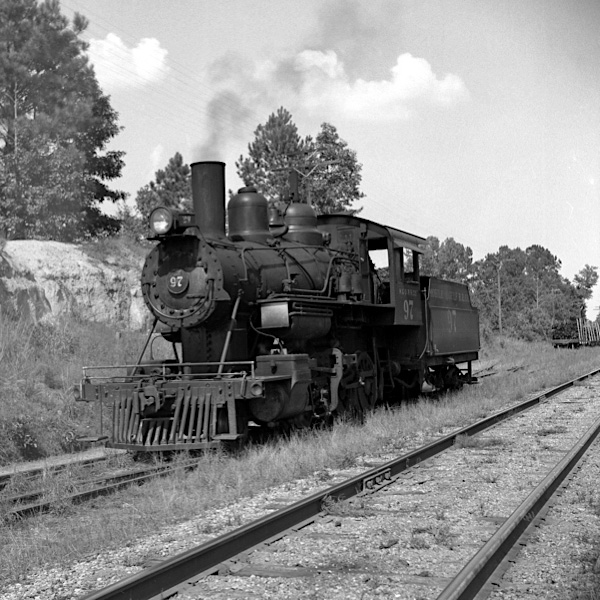
Buhl, Al / Sep 1960 / JCH
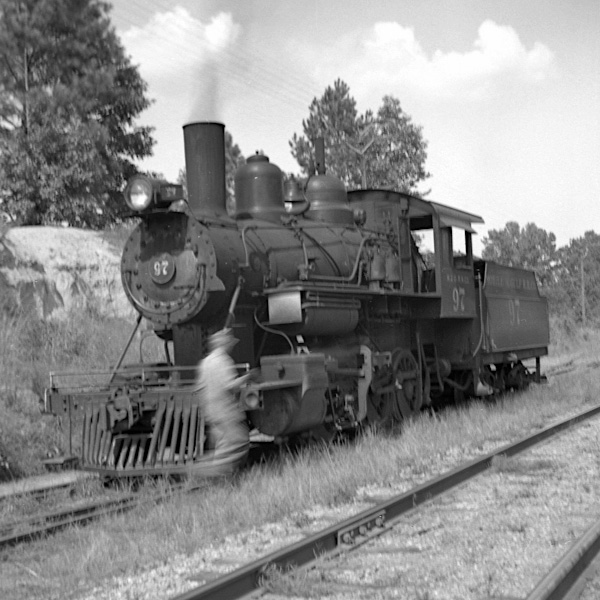
Buhl, Al / Sep 1960 / JCH
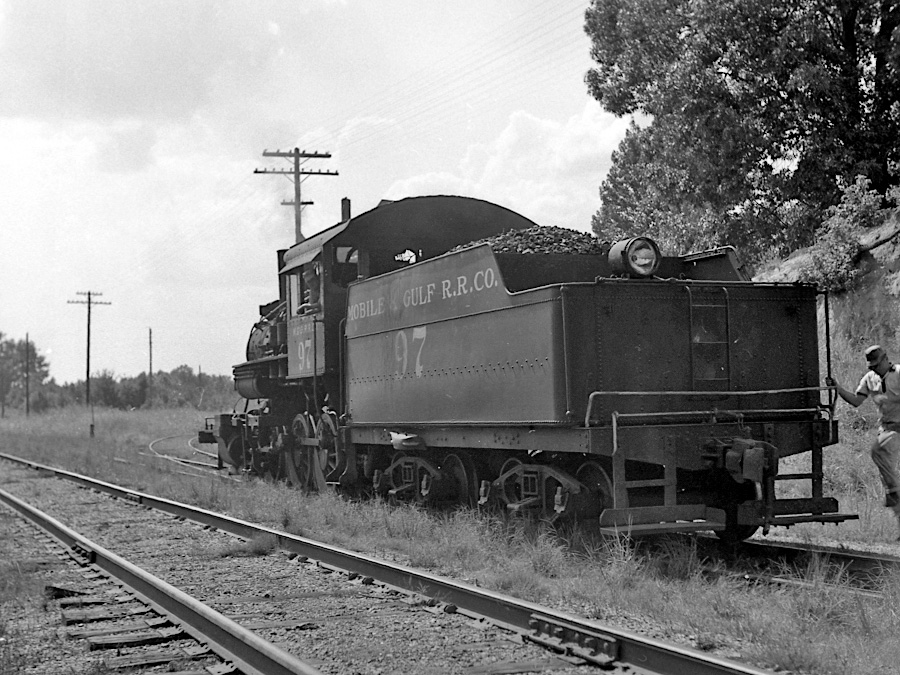
Buhl, Al / Sep 1960 / JCH
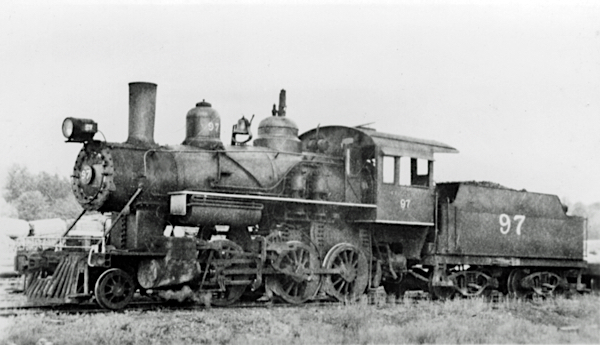
Brownsville, Al / Apr 1957 / collection

Mobile & Gulf #9
Brownsville, Al / May 1920 / collection


Mobile & Gulf #9
Lagniappe

In his classic collection Rails Through Dixie, John Krause reports that the Mobile & Gulf engineer would regularly park the locomotive behind his house after another day's run from the GM&O back to the mill. And why not? There would be no other movements on the line until his own the next day. Plus, Krause notes, it saved his having to drive to work! These kinds of notes point to a time long gone, when the country moved at an easier pace and "security" was hardly an issue. The MG looks to have been a fine little operation, with a classly little steamer. I'm glad my dad detoured to Buhl at least once to catch #97 in action on the interchange track.
Links / Sources
- John Krause, Rails Through Dixie (Golden West Books, 1965) 129
- Mississippi Rails page for Mobile & Gulf
